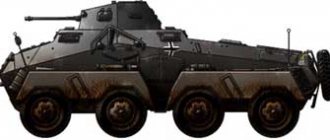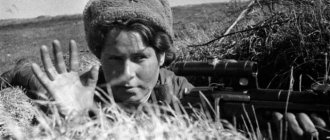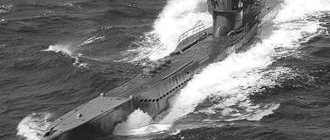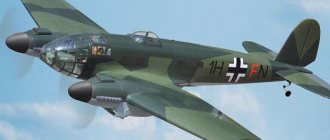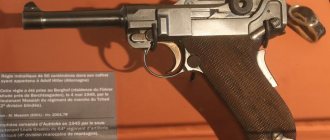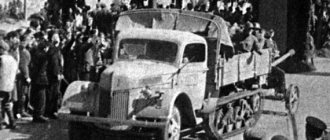When the new Reich Chancellor Adolf Hitler came to power on January 30, 1933, he left a devastated and impoverished country with six million unemployed and a collapsing economy. Apparently, the Nazis did not have a specific plan for bringing Germany out of a deep crisis, and therefore they began to act in simple ways that only they understood, which turned out to be very effective. To begin with, at a minimum, it was necessary to give work to the unemployed, and to ordinary people - faith in a bright future. There was a lot of work in Germany: reconstruction of old enterprises and creation of new production facilities, intensive construction and implementation of the ambitious project “Imperial Autobahn” - the transport infrastructure of Germany, a network of nationwide concrete highways. At the same time, planning for economic development and a system for training qualified personnel were introduced, trade unions and strikes were prohibited, while maintaining the average level of wages, the length of the working day was constantly increasing and taxes were increasing, forced-voluntary contributions to the main industries, important projects and to the development of the Nazi parties. All this quickly brought positive results, and within a couple of years Germany, renamed the Third Reich, entered the circle of the most developed countries in the world with the most powerful automotive industry. It is enough to compare a few figures: if in 1932 only 64.4 thousand cars of all types were built in the country, then just three years later, in 1935, their number reached 269.6 thousand units, and in pre-war 1938 - 381.5 thousand pieces - an incredible increase of almost 6 times. By the end of the 1930s, German cars were recognized as one of the best and most advanced in the world, which was proven by the regular highest achievements of unique German racing cars, which set 136 international records and 22 world ones.
Already by the mid-1930s, Germany became cramped within its own borders, but instead of improving the well-being of its own people, the Nazis adopted a program of military aggression, total militarization of the economy and accelerated motorization of the Reichswehr - the German armed forces created at the end of the First World War. On March 16, 1935, the Reichswehr was transformed into the Wehrmacht, which included the Ground Forces, the Air Force (Luftwaffe) and the Navy, and from 1940 also the SS troops. Adolf Hitler has been Supreme Commander-in-Chief since 1938. Until the fall of 1940, he managed to draw Italy and Japan into the Nazi bloc, as well as annex or occupy most Western European countries, whose industries humbly began to work for the benefit of the Third Reich. With the invasion of Nazi troops on September 1, 1939, World War II began. On June 22, 1941, it spread to the Soviet Union.
By mid-1940, Germany had enormous military potential and a powerful automobile industry in almost all of enslaved Western Europe, which accelerated the implementation of the ambitious military plans of the Third Reich. With the outbreak of war, the situation in the German automobile industry itself changed radically. After its transfer to martial law, the production of conventional passenger cars began to decline rapidly in favor of army trucks, half-track tractors and armored vehicles. In 1940, Germany produced only 67.6 thousand passenger cars compared to 276.8 thousand cars in 1938, and army variants already predominated in this number. At the same time, 87.9 thousand trucks were assembled, almost 40% more than during the last peaceful year. In 1941, these figures were 35.2 and 86.1 thousand cars, respectively. According to official German statistics, during the period 1940-1945, all factories of the Third Reich produced 686,624 vehicles of various TYPES, including half-track tractors. The share of passenger cars in this quantity was 186,755 units. The largest part of the production was made up of trucks - 429,002 vehicles, of which the sector of the most popular 3-ton trucks reached 75-80% of annual production volumes; cars of the 1.5-ton class - 15-20%. The rest were heavy trucks, various wheeled tractors and special chassis. During the Second World War, 70,867 units were built of various half-track tractors, trucks and chassis. In total, from the beginning of the 1930s to the spring of 1945, 537.8 thousand wheeled vehicles of all types were built for the German Armed Forces at German enterprises. These achievements ensured the Wehrmacht's reputation as one of the most motorized and highly mobile military forces in the world, with the highest proportion of diesel trucks. The contribution of the satellites of the Third Reich, annexed and occupied countries of Europe to the weapons of the Wehrmacht during the war is estimated quite highly - up to 100 thousand new vehicles of various types, without taking into account the huge and uncountable number of requisitioned civilian vehicles.
According to the Versailles Peace Treaty, Germany was prohibited from having its own large military formations and producing heavy military equipment, including army trucks and armored cars. Since the mid-1920s, work on military vehicles was carried out in Germany in secret. They began with the development of a family of three-axle utility vehicles, which later turned into army trucks, and future armored vehicles were tested under the guise of training models on passenger chassis. By the beginning of 1933, the German automobile industry represented a complex web of several dozen companies - from numerous small to the largest concerns of its time, led by the Daimler-Benz group, which produced Mercedes-Benz cars. ). All together they produced a motley and different-brand family of vehicles of different classes, in which strict and pedantic army order had to be immediately established. In 1934, the Armament Directorate of the Ground Forces of the German Military Department adopted the promising Einheits standardization program for military vehicles, aimed at creating unified all-wheel drive families of cars and trucks that could be assembled from common units at several companies at once. As a result, the Wehrmacht began to receive fairly advanced vehicles with all drive wheels, gasoline and diesel engines, maximally unified with civilian products and equipped with the same units and parts. An even clearer and deeper unification was introduced in the program of half-track transporter tractors, which served as the basis for a family of the most efficient and combat-ready armored personnel carriers of their time. In order to save money and quickly expand production volumes, several German companies had to simultaneously assemble identical tractors.
In the same 1934, Colonel Nehring developed the “Military Planning Instructions”, according to which it was proposed to subordinate the entire development of the German automobile industry to the strategic interests of the militant Third Reich, and control over the design of new types of vehicles at all companies was to be exercised by military representatives. As a result, government investment in the national automobile industry increased from 5 million Reich marks in 1933 to 8 and 11 million marks in 1934 and 1935, respectively. In his “instructions,” Nehring paid special attention to the complete refusal to use any components and assemblies of foreign origin in German military vehicles. This immediately led to the construction in Germany of enterprises for the production of their own components and increased government subsidies for the German branches of the American corporations General Motors and Ford, which already in 1935-1937 switched to a completely autonomous production mode . At the same time, another interesting fact deserves attention, which disavowed the military plans of the Third Reich: before the start of the first hostilities, Germany managed to purchase licenses from the USA and Great Britain for a number of particularly important automobile units, components and parts, which were then turned against their former owners.
The Nazi military leadership could not put up with the diversity of the German automobile fleet. In the second half of the 1930s in Germany, including annexed Austria and Czechoslovakia, there were 55 types of cars and 113 types of trucks, which used 113 types of starters, 264 generators, 112 brake cylinders, 264 types of light bulbs, etc. As a result, summarizing these data in the fall of 1938, Colonel Adolf von Schell, the General Staff Commissioner for Automotive Technology, future Major General, developed a program to restore order in the Wehrmacht's automotive industry. The final version of the “Shell Program”, adopted in November 1939, provided for the preservation for the needs of the Wehrmacht of only 30 types of cars and 19 trucks of five categories of carrying capacity from 1.0 to 6.5 tons. Its implementation was entrusted to the parent German automobile companies together with enterprises of Austria and Czechoslovakia . The largest German companies developed and produced the military vehicles assigned to them independently, but for a number of new types of vehicles, in order to reduce the time and costs of design and organization of production, work was carried out jointly by four international groups of companies formed in accordance with the Shell Program. The main army trucks were recognized as two-axle 3-ton class vehicles with rear-wheel drive, and 1.5-ton trucks were supposed to be used for auxiliary needs. A few heavy trucks were used to deliver light tanks and install special equipment or weapons. The implementation of Schell's plans led in 1940 to the disappearance of most of the more or less perfect and sometimes very original designs of German military vehicles, but it brought strict order to the system of supplying military vehicles to the Wehrmacht with strict subordination of all companies to state plans and requirements. Thus, in the new military conditions of total economy and on the eve of large-scale military operations, all the main wheeled vehicles and tractors of the Wehrmacht were standardized and maximally unified with their civilian versions of mass production, and the production of most of the previous vehicles that did not prove themselves on the battlefield was discontinued.
As a result of such drastic, very tough and urgent measures, in the summer of 1941, the Wehrmacht entered a new phase of World War II with a more slender and combat-ready arsenal of the most advanced military vehicles at that time, created with special care and capable of performing all the necessary functions from transporting light military cargo before direct participation in hostilities, theoretically in any climatic conditions. For the German expeditionary forces in North Africa in the early 1940s, production vehicles were produced in a special tropical configuration, but they were unable to cope with the Russian off-road conditions and severe frosts: German military vehicles, which had proven themselves well in 1938-1940 during the lightning-fast blitzkriegs on the smooth roads of Germany and Western Europe, with the opening of the Eastern Front, it turned out to be unadapted to the new combat realities.
From the second half of 1941, after the victorious campaigns in the West, the most difficult stage of testing the true merits of the Third Reich's vehicles began. The defeat near Moscow and the entire Russian campaign led to a hasty rethinking of decisions previously made in quiet military offices, to the reorganization of its industry and military automotive program. At this time, the Wehrmacht made its main bet on using mainly more efficient all-wheel drive and half-track vehicles, expanding the production of the simplest, most durable and cheapest cars with diesel engines, as well as various means of increasing cross-country ability. New major defeats at Stalingrad and Kursk, as well as the catastrophic situation in the economy of the Third Reich, led to another reorganization of the structure of the Wehrmacht's automotive technology. In October 1943, the military department put into effect the so-called Shell anti-crisis plan, which provided for the production of only six types of military cars and trucks, which received primitive angular wooden cabins and simpler components. During 1944, production of most wheeled military vehicles in Germany was discontinued, and until the spring of 1945 only a few simplified trucks and tractors remained in production. The once most powerful and most advanced military automobile arsenal of the Third Reich never managed to achieve superiority over the Armed Forces of the USSR and its allies. By the end of the war, the overwhelming majority of German military vehicles were destroyed.
Despite the complete defeat of the Wehrmacht in World War II, Nazi Germany left a rich legacy in the field of design and mass production of army vehicles. Its most important achievements are considered to be: the creation of the first standardized families of army vehicles of different classes, the first production and experimental amphibians, two-, three- and four-axle all-wheel drive vehicles and chassis for armored vehicles, the world's best diesel engines, the most efficient half-track tractors and armored personnel carriers, fundamentally new types of artillery tractors, staff and combat vehicles, heavy-duty armored limousines for the military elite. It is worth adding to this that all this was created by the efforts of only one country, which until recently was on the verge of economic collapse, and without any official orientation towards imports.
German passenger staff vehicles
The most important achievements of the German automobile industry include the creation at the end of the 1920s of a fundamentally new independent class of simplified army vehicles for headquarters purposes, created on the chassis of conventional production passenger cars with rear drive wheels. Due to the characteristic shape of the open body, reminiscent of a ladle, basin or baby bath, these simple and inexpensive cars received the name “Kubelwagen” (Kubelwagen or Kubel-PKW), that is, “car-pelvis”, or “passenger car-bath”. During the Reichswehr they...
Read more
Kübelwagen "Volkswagen 82"
An extremely simple, unpretentious, economical and practical car, the Volkswagen 82. With a utilitarian body, it has earned the reputation of the most famous and widespread light multi-purpose rear-wheel drive army vehicle of the Second World War, the best light Kübelwagen of the Wehrmacht and a kind of analogue of the American jeep. It was widely used on all fronts and literally in all military formations, including serving as trophies in the Red Army and in Allied units on the Western Front. The history of the creation of this machine is closely ...
Read more
Faustpatron
Nazi Germany's use of huge numbers of tanks on the battlefield opened a Pandora's box. Over the course of several years, the Allied armies built up their tank capabilities, and in the summer of 1943 the German army faced large numbers of British, American and Soviet tanks.
The Wehrmacht needed an inexpensive and easy-to-use way to saturate the battlefield with anti-tank firepower. In August 1943, the first Faustpatrons - disposable grenade launchers - entered the troops.
The Faustpatron was incredibly simple for an effective anti-tank weapon. It did not require specially trained fighters to use it. A primitive tube with a warhead, open at both ends, and a trigger - that’s all the wisdom. The effective firing range is up to fifty meters. The warhead had the amazing ability to penetrate armor up to 140mm thick, making it capable of destroying any Allied tank.
Faustpatron made everyone, even old men and sixteen-year-old boys who were mobilized into the army at the end of the war, potential tank killers. In total, before the end of the war, German industry produced more than eight million of these weapons of various modifications. Fortunately, even such a masterpiece of German technology of the Second World War did not save Nazi Germany from defeat.
Source
All-wheel drive passenger cars
The idea of all-wheel drive has been in the air since the first years of the 20th century as a panacea for ensuring high cross-country ability of wheeled vehicles on bad roads, in inclement seasons and on rough terrain. Decades passed, but due to the complexity of transmitting torque to the drive and steered wheels, these projects were not easy to implement. The world has already managed to build high-quality roads and smooth highways, but for a long time it was not possible to create reliable and efficient all-wheel drive all-terrain vehicles, although even during the First World War...
Read more
MAN ML4500
MAN ML4500S is buried in Soviet mud
Of the heavy trucks, the MAN ML4500 truck was less common. From 1940 to 1945, the troops received 8.5 thousand vehicles, including all-wheel drive ML4500A.
As befits a company that stood at the origins of diesel engine production, the trucks were equipped with an 8-liter diesel engine with a power of 110 hp. Thanks to the high-torque engine and powerful spar frame, the load capacity of the ML4500 was increased to 4950 kg.
At the front, MANs were valued for their high reliability and endurance. Their chassis was used to install communications vans, a mobile hospital, repair shops and airfield tankers.
Light amphibious vehicles in Germany
Development of lightweight amphibious all-wheel drive military vehicles has been carried out in Germany since the mid-1930s and for a long time did not bring significant results. The impetus for the intensification of this activity was the large investments of the Nazi regime in such a promising business, allocated in the process of planning new military operations, as well as the beginning of mass production of the land “Kübelwagen” KdF-82, which served as the basis for the floating model KdF-166. Volkswagen-166 (1940-1944) In the process of organizing serial production...
Read more
Lightweight standardized Kübelwagens
To replace the disparate rear-wheel drive “Kübelwagens” of numerous German manufacturers, in 1934 the leadership of the German military automotive industry decided to release a new family of “light all-wheel drive standardized passenger cars” “Einheits” (Leichter Einheits Gelandegangiger Personenkraftwagen or le.gl.Einheits-PKW) of the original designs with serial units. This made it possible to reduce costs for the development, organization of production and maintenance of more complex and expensive vehicles. The lead developer was appointed relatively...
Read more
Medium standardized Kübelwagens
The second, more extensive range of medium-sized “semi-heavy all-wheel drive standardized passenger cars” “Einheits” (Mittelschwerer Einheits Gälandegangigär Personenkraftwagen, or m.gl. Einheits-PKW) turned out to be more advanced, practical and well-known on all fronts. Its lead developer was , which already had experience in creating a small series of all-wheel drive staff vehicles in the early 1930s. The new family consisted of seven unified basic multi-purpose vehicles, assembled by three companies in the period 1937-1943. All of them were completed...
Read more
Heavy standardized Kübelwagens
In accordance with the plans of the Armament Directorate of the Wehrmacht Ground Forces, in the mid-1930s, the development of a third family of “heavy all-wheel drive standardized vehicles (Schwerer Einheits Gelandegangiger Personenkraftwagen, or s.gl.Einheits-PKW) began with an easily recognizable appearance with a massive wide front end. According to the laws of standardization, they were classified as passenger cars, although in shape and parameters they had almost nothing in common with them. The heavy family consisted of 12 standardized vehicles and chassis for various purposes with different layouts and...
Read more
Büssing-NAG 4500
Büssing-NAG 4500S
In our country, Büssing is not very well known. Meanwhile, this is one of the oldest German automobile companies, founded in 1903. From the very beginning, the company specialized in heavy-duty trucks. Moreover, they had a reputation as very reliable and durable machines, with a large margin of safety.
The Büssing-NAG 4500 entered production in 1941. In terms of its design, it was a further development of the Büssing-NAG 500 model, but had a somewhat lightweight design and a load capacity reduced to 4.6 tons. The all-wheel drive modification of the Büssing-NAG 4500A carried a smaller payload per hundredweight.
The truck was equipped with an original 7.4-liter diesel engine producing 105 hp. He had a very moderate appetite. For example, the all-wheel drive Büssing-NAG 4500A consumed only 30 liters of fuel per 100 km on the highway, and the rear-wheel drive one consumed 5 liters less.
In the Wehrmacht, onboard Bussings performed standard work transporting ammunition and personnel. In addition, special superstructures such as radios and repair vans, workshops, anti-aircraft guns, etc. were mounted on the chassis. A total of 14,800 Büssing-NAG 500 and 4500 trucks were produced from 1938 to 1945. Thus, it became the most popular Wehrmacht truck in its class.
Light army three-axle vehicles of Germany
In the 1920s, the main means of increasing the maneuverability of vehicles on terrain was considered to be the creation of three-axle vehicles with two rear drive axles, which corresponded to a 6x4 wheel arrangement. It was these trucks that eventually became one of the main off-road military vehicles. Soon after the First World War, many foreign firms carried out work in this direction, but in Germany this turned out to be impracticable, since heavier three-axle vehicles clearly ran counter to the requirements of the Treaty of Versailles. At a time when...
Read more
Mercedes-Benz L3000
Mercedes-Benz L3000S
The third most popular three-ton truck of the Wehrmacht is the Mercedes-Benz L3000. Unlike the Opel Blitz, it was equipped with a much more economical diesel engine with an output of 65-75 hp. And this was the only advantage of the Mercedes three-ton. The L3000 lost in the main thing: reliability and maintainability.
The three thousandth series can be divided into two main modifications. Basic rear-wheel drive L3000 (L3000S) and L3000A equipped with a front drive axle and reduction gear.
The Mercedes-Benz L3000 was produced until 1944. Production of the truck was discontinued after the destruction of the Opel plant and Mercedes switched to producing the licensed Opel Blitz 3.6-36S. This model was designated as Mercedes-Benz L701. However, they did not manage to produce many of them; in 1945, 747 of them were assembled. In total, Mercedes-Benz L3000 models produced about 27 thousand units.
Army trucks and their derivatives from Germany
Contrary to the provisions of the Versailles Peace Treaty, Germany began work on army trucks in the mid-1920s. Initially, these were light three-axle utility vehicles for neutral purposes, which in the late 1920s and early 1930s turned into outright military trucks. They were the direct heirs of the very first standardized army vehicles, which Germany began to assemble back during the First World War, and constituted the first post-war 1.5-ton standardized three-axle series with increased ...
Read more
Doctrine of naval battles
Nazi Germany made its main bet in the planned war at sea on submarines, which had proven themselves well in the First World War. During the Second World War, fascist submarines sank two thousand seven hundred and seventy-nine Allied ships with a total displacement of 14.1 million tons. The crew of the submarine P-48 sank fifty-one ships, with a total displacement of 306,874 tons.
In naval battles, the Kriegsmarine used wolf pack tactics: hunting groups of submarines for ocean convoys.
Submarines, like other German equipment from the Second World War, were equipped with modern weapons: 4-6 torpedo tubes, over 40 mines.
U-boat attacks forced the Allies to slow the flow of troops and war materials across the Atlantic and organize convoys to protect convoys of ships. By 1943, new convoy tactics, radar and anti-submarine patrol aircraft were causing serious problems with the German Type VII boats.
The initially powerful submarine fleet of the Third Reich was eventually decimated by Allied countermeasures. During the war, Germany lost seven hundred and sixty-five submarines, but was never able to interrupt the lines of communication between North America and Western Europe.
First standardized 1.5-ton range
The decision to create the first German standardized series of three-axle military off-road trucks was made back in 1926. It was supposed to include vehicles with a 6x4 wheel arrangement in three categories of load capacity 0.75; 1.5 and 3.0 tons, which were planned to be produced from standardized units at several companies. The first light samples with a payload of 750-800 kg eventually turned into three-axle army passenger cars, but the idea of a standardized 1.5-ton series was brought to life, despite the violation of the Versailles Treaty...
Read more
Second standardized 3-tone scale
The second standardized series of three-axle army trucks with a classic layout with rear dual wheels represented the most advanced and efficient German 3-ton vehicles with a 6x4 wheel arrangement. In the period from 1931 to 1942, at different times, it was assembled by five leading German companies, Büssing-NAG, Daimler-Benz, Henschel and Magirus, and the total number of basic modifications reached eight options. There was no need to talk about deep unification of the models that made it up: each company equipped its own ...
Read more
Borgward B3000
Borgward B3000S
By the end of the 30s, after the absorption of Hansa-Lloyd, Karl Borgward's company became one of the largest automakers in Germany. From Hansa-Lloyd the company received numerous military orders for trucks of various payloads, mainly three-ton trucks. The Borgward B3000 was presented in the latter class.
In its basic and most widespread version, the Borgward B3000 was a rear-wheel drive truck with a classic dual-pitch rear axle tire. It was equipped with a 3.5-liter gasoline engine producing 65 hp. or a 64-horsepower 4.4-liter diesel engine. Since 1942, the truck received more powerful engines: a 5-liter 75-horsepower diesel engine or a 3.75-liter gasoline engine with 78 hp. In addition to the single-wheel drive version, an all-wheel drive version was also produced. It was designated by the letter A at the end of the index.
The Borgward B3000 became the Wehrmacht's second three-ton truck after the Opel Blitz; until 1944, 30 thousand units were produced.
Standardized all-wheel drive diesel range
The creation of a fundamentally new standardized family of military 2.5-ton diesel trucks and a 6x6 chassis is considered one of the highest achievements of pre-war Germany of world significance. In it, German designers managed to solve several serious technical and technological problems at once, which few Western companies worked long and hard on in those years: the creation of an efficient and reliable diesel engine, a very complex and expensive drive of all wheels, including front-wheel drive; ...
Read more
Mercedes-Benz L4500
Mercedes-Benz L4500S with a simplified cab
Mercedes-Benz L4500 is the second most popular Wehrmacht truck in the heavy truck class. From 1939 to 1944, Mercedes produced about 9.5 thousand of these cars.
The car was developed as part of the program to create unified trucks of the German army - Schell-Plan. According to this plan, trucks with a carrying capacity of 1.5, 3, 4.5 and 6.5 tons were to be put into service. At the same time, vehicles of the same class were supposed to be unified as much as possible in terms of their main components and assemblies. However, by the beginning of the war it was not possible to implement the program in full. Nevertheless, the Mercedes-Benz L4500 used drive axles developed by MAN.
Otherwise, the truck had an original design. Under the elongated hood was a 7.3 liter diesel engine producing 112 hp. The engine was very economical and reliable, but, like any diesel engine, it required careful attention. Although overall the truck was very unpretentious.
German militarized commercial trucks
Despite enormous efforts, gigantic investments and high technical achievements, it was not possible to organize mass production of special army trucks in pre-war Germany. As a result, having successfully overcome the diversity of vehicles produced in the 1930s, the Wehrmacht came to the most important battles of World War II with a fleet of used standardized vehicles, and the depleted funds of the Third Reich were only sufficient to maintain the serial production of conventional commercial-type trucks, insignificantly modified...
Read more
Wehrmacht trucks
Nazi military theorists were well aware that in the new war one of the key roles would be played by motor transport. Reliable provision of own troops, delivery of ammunition, transportation of goods and many other tasks were assigned to trucks. More than 10 auto companies worked on creating the automobile “backbone” of the German army. In 1937, the Wehrmacht had 321 thousand trucks, and 12.3% of them were diesel.
With the outbreak of active hostilities, the German automobile industry increased its pace. In 1940, it produced 87.9 thousand trucks. Moreover, for the most part these were specialized military-type vehicles. In total, from 1940 to 1945, Germany produced 429 thousand trucks, most of which had a carrying capacity of three tons.
Special wheeled vehicles and armored vehicles
An interesting and little-studied page in the history of military vehicles of the Third Reich are serial and experimental wheeled vehicles, distinguished by original design features or unusual purposes. These include various types of tractors of different designs and weight categories, made on the basis of special automobile chassis or on the basis of conventional agricultural wheeled tractors. According to their purpose, automobile-type tractors, which were in service with the Wehrmacht, were classified as artillery, airfield, ...
Read more
Special tractors in Germany
This group included a variety of short-wheelbase tractors made on the basis of cars or tractors, which became quite widespread in the Wehrmacht for towing various trailers, artillery pieces or evacuating not too heavy damaged army equipment. A special group consisted of heavier ballast tractors, which were powerful trucks with special platforms loaded with ballast, which served to improve their traction and traction properties. Another category was represented by the so-called trolley tractors...
Read more
Standardized multi-axle vehicles and chassis
Work on promising multi-axle chassis for military transport and combat equipment began at the initiative of the German military department back in the mid-1920s as part of the creation of the first three-axle army trucks, and then developed in subsequent projects for standardized vehicles for the Wehrmacht. The main goal of designing such complex equipment was to create the most advanced and efficient heavy cross-country wheeled armored vehicles with exceptional combat qualities. The first orders for development...
Read more
Demag D7 Sd.Kfz.10 (1937-1944)
The engineering company had the honor of producing the first lightest half-track tractor Sd.Kfz.10 of the basic family, which included six unified vehicles. This company traces its history back to a mechanical workshop founded in 1819 in the city of Vetter, in the Ruhr industrial region. Since 1910, it has produced self-propelled wheeled and crawler cranes, and then the design of the most successful crane crawler propulsion unit, Demag, was patented and formed the basis for the entire family of half-track tractors and armored personnel carriers of the Wehrmacht, and ...
Read more
Four-axle armored vehicles "Büssing-NAG"
The creation of the world's first family of heavy four-axle armored vehicles with an 8x8 wheel arrangement and the organization of their mass production are considered the company's main achievement in the military field. The company began its development of multi-axle chassis in the mid-1920s, but only by 1937 was a functional four-axle all-wheel drive model ready. In the same year, at its plant in Elbing, in East Prussia, it began assembling fundamentally new armored vehicles of the GS series of frame construction with a rear-mounted power unit, two posts...
Read more
Half-track tractors and armored vehicles of Germany
In Germany, like in no other country in the world, along with tanks and tracked self-propelled artillery, the military made an important bet on the widespread use of half-tracked vehicles and combat vehicles. These were multi-purpose off-road tractor-trailers and armored vehicles based on them, well known in military and automotive history, which during World War II became symbols of the greatness of the Third Reich and the perfection of Wehrmacht military equipment. Indeed, at that time they had no equal. Serially produced in the 1930s...
Read more
Wehrmacht tanks of World War II, put into production during the war with the USSR
The experience of the wars with the Soviet Union has shown that the firepower and armor protection power of German tanks is not enough. What worked great in Europe turned out to be ineffective for Soviet realities. The Soviet T-34s were superior to all Wehrmacht tanks, so the next model of the German medium tank, the PzKpfw V Panther (T-V Panther) , was developed “with an eye on the T-34.” First of all, this concerns a more rational hull shape, to a certain extent borrowed from Soviet tanks.
PzKpfw V Panther tanks developed by Daimler-Benz were produced in 1943-1945. They were armed with powerful long-barreled 75 mm guns. A 7.92-mm MG 34 machine gun was paired with the cannon, and the second machine gun was placed in the front plate of the hull, in a yoke mount.
T-V "Panther"
The Panther tanks of modifications A and G also had “close combat devices” in the right rear part of the turret roof - mini-mortars (grenade launchers) that fired smoke, fragmentation and incendiary grenades. Before the end of the war, the Germans managed to produce about 6 thousand PzKpfw V tanks. In the USSR, the Panther medium tanks were considered heavy (combat weight 44.8 tons versus 26.5 tons - 30.9 tons for the T-34 of various modifications).

